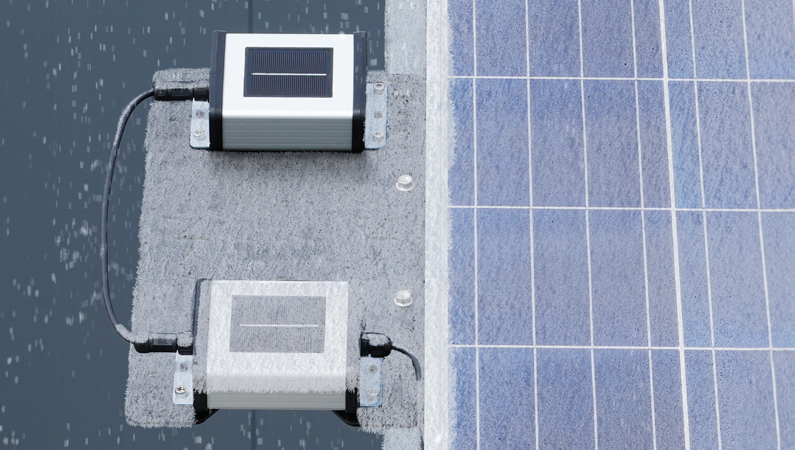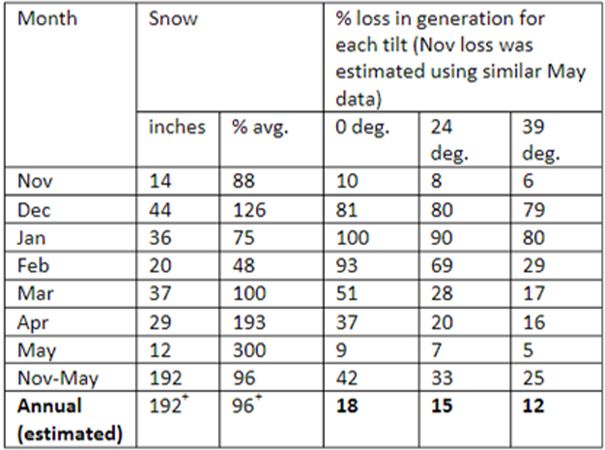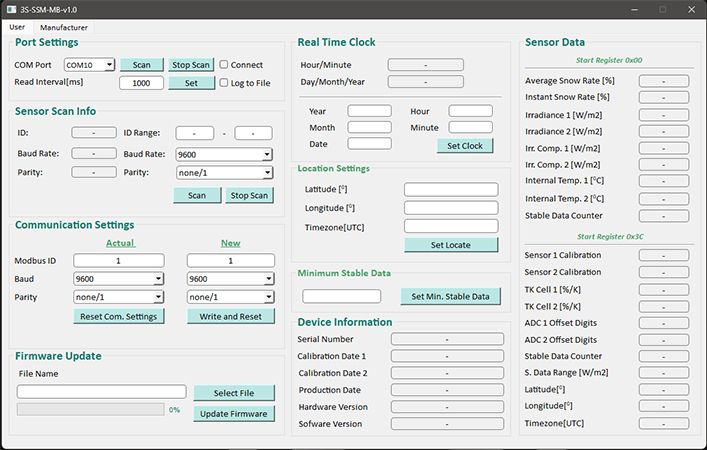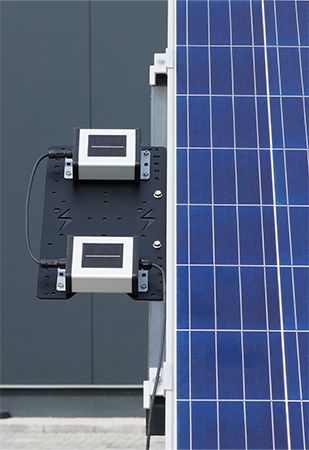Your cart is currently empty!
Enhancing Solar Tracker Systems Efficiency with SEVEN’s Snow Sensor

Snow Sensor Installation on Panels Covered with Snow
As solar photovoltaic plants continue to play a crucial role in our transition to renewable energy, optimizing their efficiency becomes essential. Introducing SEVEN’s innovative Snow Sensor, designed not only to measure and mitigate energy loss caused by snowfall shading on panels but also to enhance the performance and maintenance of PV plants in snowy environments.
The SEVEN Snow Sensor is not limited to a specific type of solar installation. Whether for commercial, utility, industrial, or rooftop projects, this sensor is a valuable tool for monitoring and managing energy losses due to snowfall.
Challenges with Snow on Tracker Systems
Many believe that solar trackers are unsuitable for snowy regions, but this is a misconception. Although solar energy generation depends on the quality and efficiency of the modules, the main concern should be the tracking system’s performance in harsh conditions and its ability to prevent snow buildup on the modules, which can reduce production. The ideal system should effectively handle snow, wind, hail, and other adverse weather conditions.
Wind and snow loads are two main nightmares for tracker systems. Snow creates both a challenging and unwanted load for the system and a cover that reduces energy production. Snow poses a significant challenge for tracker systems, where a system covered with snow should ideally remain stationary. However, SEVEN offers a proactive solution to this issue. The main advantages of the SEVEN Snow Sensor include protecting the tracker system structure from exceeding snow loads. The Snow Sensor communicates with the tracker control center and ensures that the stand takes the appropriate position depending on the snow rate on the module. With SEVEN’s Snow Sensor, the snow rate is calculated and when it reaches the level determined by the user, it is decided to bring the modules to the appropriate position. This prevents unnecessary operation of the solar tracking system when there is no or little snow, leading to savings.
The table below illustrates the impact of snow load on panel generation throughout winter. It highlights how different tilt angles affect snow accumulation and, consequently, energy production. As the tilt angle increases, the accumulation of snow on the panels becomes less problematic, leading to lower losses in energy generation. By using our snow sensor, you can ensure that your tracker systems are adjusted to the optimal angle to minimize snow load and maximize efficiency.

Table showing the impact of tilt angle and snow load on energy loss in PV panels
Snow and solar power can work together; don’t let the location of a potential project and its likelihood of snowfall discourage you from choosing solar energy. Here’s a closer look at how the Seven Snow Sensor ensures your system performs well—even in snowy regions.
PV Snow Sensor for Tracker Systems
Limitations of General Snow Sensors
In snowy regions, the accumulation of snow on PV panels can significantly impact their efficiency. General snow sensors on the market are not designed for PV plants and may focus on measuring the height of snow rather than its coverage on solar panels, which is crucial for efficiency.
The SEVEN Snow Sensor provides a crucial metric: the loss of energy production due to snow coverage on the panels. By accurately calculating the snow rate, expressed as a percentage, the sensor gives operators immediate insight into energy loss within their facility. SEVEN Sensor’s innovative approach targets the specific needs of solar PV systems, aiming to provide a cost-effective solution that accurately measures the snow’s impact on panel efficiency.
| SEVEN SNOW SENSOR | OTHER SNOW SENSORS |
|---|---|
| PV based technology | Ultrasonic or laser technology |
| Designed for PV systems | Designed for meteorological purposes |
| Measures snow load ratio | Measures snow depth |
| Precision on the mm scale | Precision on the cm scale |
| Economical | Expensive because it is designed for meteorological purposes (almost double the price) |
Innovative Technology for Monitoring
Utilizing advanced technology, the SEVEN Snow Sensor calculates the loss ratio of the PV system by comparing irradiance values from two sensors: one clean and one exposed to snow. The snowy radiation sensor simulates the conditions of the panels, while the clean sensor inside the Seven box is heated to continuously melt snow. This comparison allows monitoring systems to deliver real-time data on energy loss, empowering users to make informed decisions.
The Snow Ratio is a key indicator provided by the SEVEN Snow Sensor, calculated as:
![]()
This metric offers a clear understanding of the impact of snow on energy production, aiding in strategic planning for snow removal and panel optimization.
You can configure the project location and time for accurate snow ratio calculation using the configuration tool.

A GUI screen displaying snow rate data
Seamless Integration into PV Plant Monitoring Systems
Data collected by the Snow Sensor is seamlessly transmitted through an RS485 bus using the Modbus RTU protocol. This standardized communication protocol ensures easy integration with existing PV plant monitoring systems. Plant operators can monitor energy loss data, enabling proactive maintenance and maximizing energy output.
Robust Design for Harsh Environments
PV plants located in snowy regions face challenging weather conditions. Operating in temperatures ranging from -40°C to +85°C, this sensor ensures reliable performance even in extreme cold.

SEVEN Snow Sensor
Key Benefits and Features
- Economic Solution: It provides a cost-effective solution to mitigate energy loss.
- Fast & Simple Installation: Easy setup ensures quick integration into existing PV systems.
- Free Software Updates: SEVEN offers regular updates to enhance sensor performance.
- SunSpec Compliant: Complies with industry standards for seamless integration.
In conclusion, the SEVEN Snow Sensor offers a comprehensive solution for optimizing solar PV efficiency in snowy conditions. With precise energy loss measurement, efficient snow ratio calculation, and proactive panel cleaning capabilities, this sensor empowers PV plant operators to maximize energy production and minimize downtime.
With ongoing field tests and a focus on developing a sensor tailored for PV systems, SEVEN Sensor is at the forefront of addressing the challenges posed by snow accumulation in solar energy production.